Bosnia and Hercegovina
- Details
- Written by Alexia Alexia
- Hits: 4487 4487
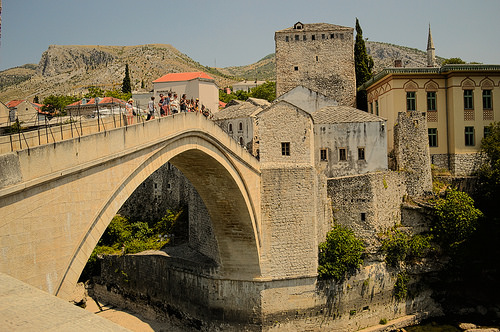 Yup, you guessed it, we are sticking with the Balkan countries and visiting Bosnia-Hercegovina today. I moved to Europe right when the Bosnian war started, so my initial thoughts on this country are tarnished by the brutality and war crimes that occurred during this horrific episode of the country’s history. For today, though, we are going to set that aside and concentrate on what there is to do and see in this all but for 20km land-locked country.
Yup, you guessed it, we are sticking with the Balkan countries and visiting Bosnia-Hercegovina today. I moved to Europe right when the Bosnian war started, so my initial thoughts on this country are tarnished by the brutality and war crimes that occurred during this horrific episode of the country’s history. For today, though, we are going to set that aside and concentrate on what there is to do and see in this all but for 20km land-locked country.
The capital, Sarajevo, is sometimes called the “Jerusalem of Europe” for its rich history of religious and cultural variety. The city has an interesting history: it was an Ottoman stronghold in the 15th century; the location of the assassination of the Archduke of Austria that sparked the Second World War; host city for the 1984 Winter Olympics; and has the unenviable designation as the city to undergo the longest siege during modern warfare (1,425 days during the Bosnian war). Much of the city has been restored, the bullet holes plastered over, and seems worth a visit. The old town has both an evocative Ottoman quarter with little streets filled with craft workshops and cafes and a trendy Austria-Hungarian quarter built during the late 19th century.
From the websites I’ve checked, Stari Most in Mostar is the country’s chief attraction. This bridge was built in 1566 on the order of Suleiman the Magnificent (I tell you, they just don’t name leaders like they used to). However, the original bridge was destroyed in 1993 during the war but has meticulously been reconstructed using original techniques and is now a UNESCO World Heritage Site.
Bosnia-Hercegovina also offer some of Europe’s best river rafting and cheap skiing, although I can say from experience that cheap is not always a good idea when it comes to ski holidays. However, in 2012 National Geographic named Bosnia as the best mountain biking adventure destination.
Many tours and adventures seem to focus on the recent war, as I guess is to be expected. And lots of the historic buildings and sites were damaged or destroyed. Some have been rebuilt (like the Stari Most) but others remain in ruins. From what I’ve been able to find, tourism is just getting a foothold in the country, although it is expected to have the third highest tourism growth rate in the world between 1995 and 2020. This statistic made me smile because I imagine that as the war only ended in late 1995, there wasn’t a lot of tourism happening that year. So any growth would be remarkable.
However, if you don’t like crowds and want to be the first to “discover” hidden treasures, Bosnia and Hercegovina may be the destination you’re looking for. Just be careful and consult with the locals, because a couple sites I researched mentioned that not all the landmines have been cleared from the country.
Unfortunately, I don’t think it will make my 2017 European Adventure itinerary. But if you do go, or have been, please comment and tell me what I’m missing. Until next time, happy trails.
Slovenia
- Details
- Written by Alexia Alexia
- Hits: 4563 4563
 We’re sticking with the Balkans and venturing a little farther north into Slovenia. Bordered by Italy to the west, Austria to the north, Hungary to the north east and Croatia to the south, Slovenia has a tiny bit of coastline on the Adriatic Sea. It is a mostly mountainous country. The capital is Ljubljana which for some reason makes me smile. Maybe because it sounds like you need to be underwater to pronounce it correctly. With only 2 million people and half of the country covered in forest, Slovenia seems an ideal place to get away from the crowds that consume many European countries.
We’re sticking with the Balkans and venturing a little farther north into Slovenia. Bordered by Italy to the west, Austria to the north, Hungary to the north east and Croatia to the south, Slovenia has a tiny bit of coastline on the Adriatic Sea. It is a mostly mountainous country. The capital is Ljubljana which for some reason makes me smile. Maybe because it sounds like you need to be underwater to pronounce it correctly. With only 2 million people and half of the country covered in forest, Slovenia seems an ideal place to get away from the crowds that consume many European countries.
The first photo I saw of Ljubljana, I thought it was the canals of St. Petersburg and had to double checked the caption. And with less than 300,000 inhabitants Slovenia’s largest city shouldn’t be too crowded. Ljubljana was voted the Green Capital of Europe for 2016 and cars are restricted in the city center so it sounds like a pedestrian paradise. And there’s a castle. You can get to it by a funicular (if you don’t fancy the hike up the hill) and they have Time Machine Tours, although unfortunately they’re not led by Dr. Who.
Another not-to-miss attraction in Ljubljana is the market. If possible, go on a Friday in summer when it's the venue for Odprta Kuhna, a weekly food fair with local and international specialties cooked on site from restaurants around the city and beyond (source: http://www.lonelyplanet.com/slovenia/ljubljana/sights/markets-bazaars/central-market#ixzz4HQ8g1pXE). Yum, sounds delicious, especially when I read that Slovenians are obsessed with using only fresh, locally sourced ingredients. I’d probably have to roll my husband who is a foodie away from here.
The country is also known for its abundance of clean water and its thermal hot springs. According to the Slovenia info site, all the health resorts are located in “the heart of intact nature.” Some of the photos look truly stunning so if rest and relaxation are on your to-do list then you may have found your next destination. If you prefer something more active then you can choose from skiing, walking/hiking, horseback riding, rafting or cycling. Or my favorite sport, walking along a beach.
If you do travel here, take a jaunt to Lake Bled, the iconic Slovenian destination with mountain peaks, alpine meadows, and a lake complete with an island and a castle. And if you want a truly European memory, time your visit for the third Sunday in September and attend the Cows’ Ball in Bohinj when the cows return from the summer pasture and are decorated with wreaths and paraded back to their farms accompanied by the herders, cheesemakers, milkmaids and other farming types. You might just want to watch where you step.
Slovenia, yet another country vying for a stop on my European itinerary. See you back here on September 1 when we’ll visit Bosnia and Herzegovina. Ciao for now.
photo credit: Wilderness via photopin (license)
Croatia
- Details
- Written by Alexia Alexia
- Hits: 4585 4585
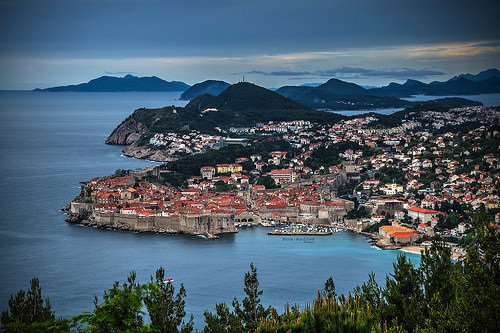 We will continue to explore the Adriatic coast by venturing into Croatia. This country must have been on my mind because while I was writing a short scene for an upcoming promotion, my hero whispered in my ear that he was Croatian. So for today, I’m going to give you an insight into the type of things I research when I write. Bear in mind that until I actually delve into the book, there are other questions that will come up. For instance, I already know that I’m going to have a boat scene and am wondering if Croatia have an Olympic sailing team (the answer is yes).
We will continue to explore the Adriatic coast by venturing into Croatia. This country must have been on my mind because while I was writing a short scene for an upcoming promotion, my hero whispered in my ear that he was Croatian. So for today, I’m going to give you an insight into the type of things I research when I write. Bear in mind that until I actually delve into the book, there are other questions that will come up. For instance, I already know that I’m going to have a boat scene and am wondering if Croatia have an Olympic sailing team (the answer is yes).
I also look at the history of a country, mostly for my enjoyment. Croatia has had a turbulent past, as has much of this region, and fought for its independence in the 1990s. War has a significant impact on people so will undoubtedly be an influencing factor on my hero’s personality and motivations.
Food also plays an important part in a culture, so I like to research the national dishes. Croatia has a diversity of gastronomic delights. With a large coastline, fish of course feature, as well as a typical Mediterranean diet with Italian influences. However inland, such as on the flat plains of Slavonia, it seems more meat-based dishes predominate. There is one called Poderane Gaće that translates as “ripped underpants” which sounds interesting, from what I can tell it’s kind of like a donut cooked in pork fat or oil and popular at country fairs. I may have to incorporate that into my story.
The type of housing and climate are also factors that need to be considered. Will my couple cozy up in front of a fireplace on a cold winter night? Or be kicking of the sheets because it’s too hot to sleep in the summer. Of course, as I write billionaire romance, my hero can afford air conditioning, but I have a feeling this guy may be a bit dastardly and as part of his revenge plot insist the heroine live in his run-down childhood home in the country rather than his coastal mansion.
But no research, especially for one of my books, would be complete without checking out the best places to visit. And Croatia has no shortage of these. Ranked the eighteenth most popular tourist destination in the world, it has seven UNESCO world heritage sites including the old town of Dubrovnik and the Plitvice Lakes National Park. Both of which I’ll have to incorporate into my story.
However, in addition to writing a story set here, I’m also planning my next year’s summer vacation and I think Croatia will definitely be on the itinerary, as personal research of course. After all, there’s only so much you can learn from books.
Have you been to Croatia? What do you suggest I visit/eat/explore?
photo credit: Dubrovnik Old Town via photopin (license)
Montenegro
- Details
- Written by Alexia Alexia
- Hits: 4590 4590
 In keeping with my last post on Albania, we’re going to continue to explore this corner of Europe and it’s oft-forgotten countries. Today let’s visit Montenegro on the Adriatic Sea. To the south of this country is Albania, to the north Bosnia and Herzegovina, and Kosovo and Serbia are to the east. There is also a sliver of Croatia along the north west corner. Montenegro means black mountain and many other countries have translated this name literally into their language so it’s called Crna Gora in Montenegrin. It became an independent country in 2006. From 1918 to 2006 it was part of Yugoslavia, although in 2002/2003 it joined forces with Serbia. Montenegro also has a royal family to “promote Montenegrin identity, culture and traditions through cultural, humanitarian and other non-political activities” the post is currently held by Nikola II Petrović-Njegoš, Crown Prince of Montenegro.
In keeping with my last post on Albania, we’re going to continue to explore this corner of Europe and it’s oft-forgotten countries. Today let’s visit Montenegro on the Adriatic Sea. To the south of this country is Albania, to the north Bosnia and Herzegovina, and Kosovo and Serbia are to the east. There is also a sliver of Croatia along the north west corner. Montenegro means black mountain and many other countries have translated this name literally into their language so it’s called Crna Gora in Montenegrin. It became an independent country in 2006. From 1918 to 2006 it was part of Yugoslavia, although in 2002/2003 it joined forces with Serbia. Montenegro also has a royal family to “promote Montenegrin identity, culture and traditions through cultural, humanitarian and other non-political activities” the post is currently held by Nikola II Petrović-Njegoš, Crown Prince of Montenegro.
Of course this area has been inhabited for centuries and is full of history. If you’re not into the past, then the present has plenty to offer as well. Here’s a quote from the Lonely Planet site: “Mountains jut sharply from crystal-clear waters in such a way that the word 'looming' is unavoidable. As if that wasn't picturesque enough, ancient walled towns cling to the rocks and dip their feet in the water like they're the ones on holiday. In summer the whole scene is bathed in the scent of wild herbs, conifers and Mediterranean blossoms. The word 'magical' is similarly impossible to avoid.” (Read more: http://www.lonelyplanet.com/montenegro/introduction#ixzz4EnTIDMPg)
Some facts to drop into conversation at your next cocktail party: Montenegro has a population of just over 650,000, the capital is Podgorica (the old royal capital is Cetinje), it has 294 km of coastline of which 73 km is made up of 117 beaches although the majority of them must be very small because the incredibly aptly named Long Beach is 13 km long. So, aside from going to the beach, what else is there to do in this small but stunning country?
The first place to visit is Kotor, an ancient walled city set in a spectacular bay. Another place to visit is the Njegoš Mausoleum set atop Montenegro’s second highest peak, Jezerski Vrh, its in Lovćen National Park. Another must-see destination is Perast which according to Lonely Planet looks like a chunk of Venice floated down the Adriatic and anchored itself in the bay. Wants something a little more active? You can raft on the Tara River in summer or go skiing in the winter. Or, if you’re really adventurous, climb several of the amazing mountain peaks.
So, looks like I’ve got another place to add to my bucket list and a potential setting for a book. Have you been to Montenegro? I’d love to hear what you suggest. See you back here in August and I apologize for the delay in this post, I was out of town for a few days and thought I’d have time to put it up on my website, but I didn’t. Cheers!
photo credit: Kotor-port-closeup via photopin (license)
Tirana, Albania
- Details
- Written by Alexia Alexia
- Hits: 4588 4588
 I know very little about this European country, and I imagine most people are in the same position. However, as I watched their football (soccer) team play during Euro2016, I thought I’d investigate a little. I had done some surface research when I wrote The Greek’s Stowaway Bride as it makes reference to the country several times.
I know very little about this European country, and I imagine most people are in the same position. However, as I watched their football (soccer) team play during Euro2016, I thought I’d investigate a little. I had done some surface research when I wrote The Greek’s Stowaway Bride as it makes reference to the country several times.
Located across the Adriatic Sea from Italy, Albania’s southern border is with Greece, it’s eastern border shared with Kosovo and Macedonia and to the north is Montenegro. Part of the Ottoman Empire until 1912, Albania was conquered by Italy in 1939 and then occupied by Germany in 1943. It became communist in 1944. Ruled by a xenophobic dictator, the country was basically closed until the early 1990s when it became a democracy. Since then Albania has struggled to catch up with the rest of Europe as regards its infrastructure and market economy.
Many of the communist-era buildings have been painted bright colors, but I understand that inside they are falling apart. Likewise, for a country where ownership of personal vehicles was banned until the 1990s, the roadways are poorly paved and anyone driving is cautioned that large potholes, or boulders out of town, often litter the route. Air pollution is also an issue as many of the cars are older, more polluting models rejected by the rest of Europe.
Enough of the negative, though, if you want to add Tirana or Albania to your ‘been there, done that’ list, what would you do or see in the country? The number one place to visit on several of the sites I researched was a trip to Mount Dajti National Park. You can take a cable car (built by an Austrian company if that reassures you) to near the top and then hike the various trails or just enjoy the view. Evidently many Albanian’s go there for picnic lunches but if you didn’t pack your own food, you can enjoy a lamb feast along with the views at the Panorama Restaurant.
The national history museum is also highly rated. Most of the signage is in English except in the new exhibit that pays homage to those persecuted under the communist regime. Having been occupied for centuries, Albania has lots of historical sites. Unfortunately, many are buried under buildings or only partly excavated. The 15-20,000 seat amphitheater at Durrës has a few occupied houses on the stage. There are several castles to visit and an ancient city site called Butrint where the ruins span a 2500-year period. What caught my eye, however, were the caves of Pellumbas which is outside the village of the same name. The village in itself seems worth the visit, a true picture of Albanian life past, present and future. The village boasts two cafés, so stop at one before you head to the caves and the other on the trip back. By the way, the road to the village is noted as “treacherous” so you may want to leave the driving to someone else.
That’s it for Albania for this post. If you’ve been to this not-often-heard-of country, I’d love to hear from you. Otherwise, I’ll see you back here on the 15th for another exciting destination. In the meantime, I’ll be watching more Euro2016 football. Go, Iceland!
photo credit: Souvenirshop in Gjirokaster via photopin (license)
Moscow, Russia
- Details
- Written by Alexia Alexia
- Hits: 3691 3691
 I spent two weeks in Moscow, many, many, years ago. It was when I went to summer school in St. Petersburg, in my relatively unsuccessful attempt to learn Russian. The Moscow excursion was part of the package. I really enjoyed my visit and I only scratched the surface of this amazing city.
I spent two weeks in Moscow, many, many, years ago. It was when I went to summer school in St. Petersburg, in my relatively unsuccessful attempt to learn Russian. The Moscow excursion was part of the package. I really enjoyed my visit and I only scratched the surface of this amazing city.
The first stop on most Moscow itineraries includes Red Square and the impressive buildings in its vicinity: the Kremlin, Saint Basil’s Cathedral, (which looks large in photos but really isn’t that big) and the Armoury. If you have an interest in Russian history, you can queue for an hour or so and walk silently past the body of Vladimir Lenin in the mausoleum also located in the square. At least it’s a break from the constant loudspeaker 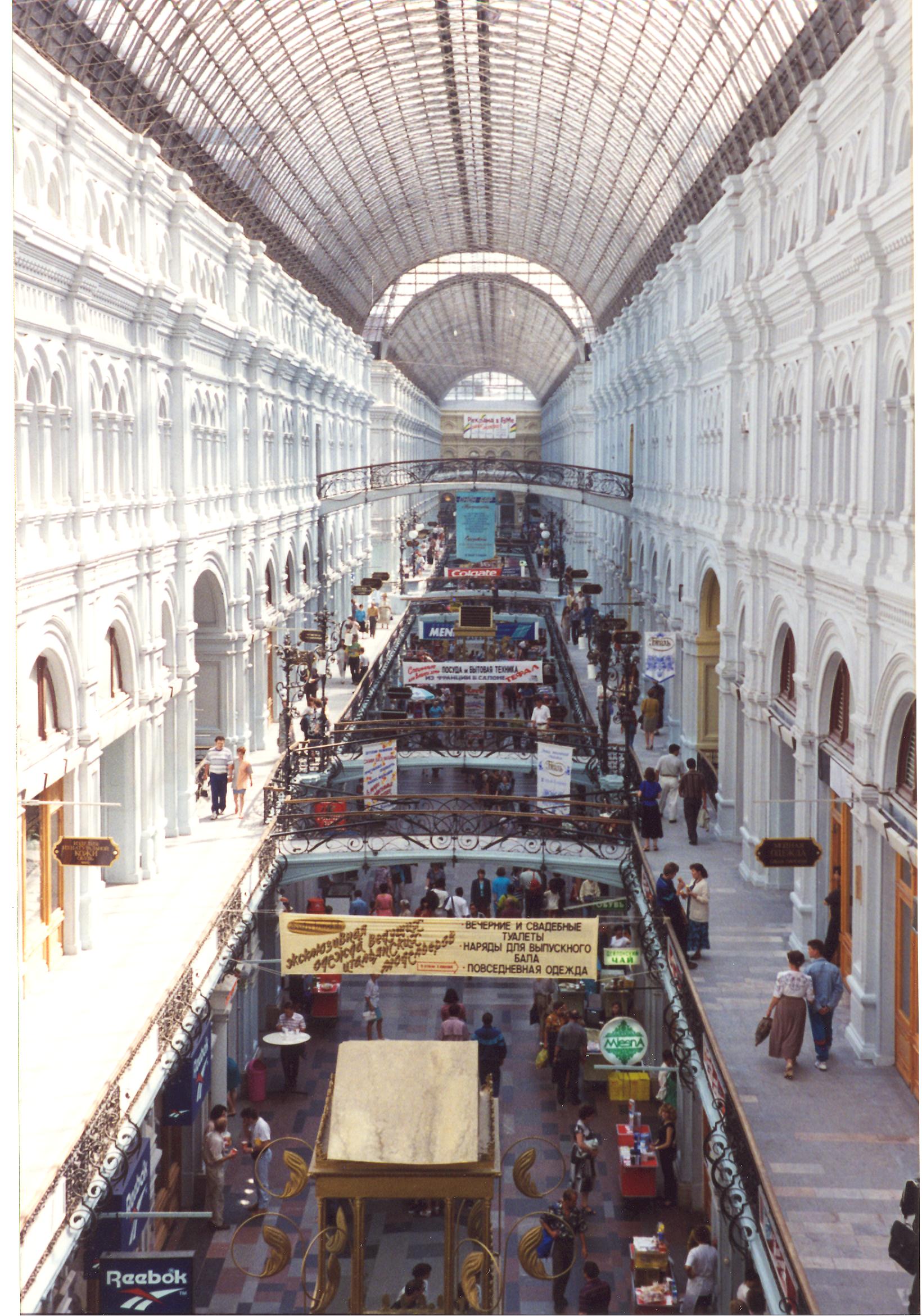 announcements of various tour groups. Also of interest is the GUM department store (GUM is short for Глáвный универсáльный магазѝн or main universal store if your Russian’s not much better than mine). From what I remember, rather than a traditional north American department store, it was lots of little boutiques housed in an impressive, glass-roofed building. Definitely worth a visit but I don’t remember buying anything.
announcements of various tour groups. Also of interest is the GUM department store (GUM is short for Глáвный универсáльный магазѝн or main universal store if your Russian’s not much better than mine). From what I remember, rather than a traditional north American department store, it was lots of little boutiques housed in an impressive, glass-roofed building. Definitely worth a visit but I don’t remember buying anything.
One of my most memorable occasions spent in Moscow was at the magnificent Bolshoi Theatre where I watched a production of the opera Aida. The other students who were with me got bored and left at intermission but I stayed for the rest of the performance. Afterward, at the metro station, on my way back to my hotel, there were tens of people queued up outside, selling various items. I bought a bag of piroshky from a very elderly lady. Pirosky are buns or pies, stuffed with meat or vegetables. The ones I bought from that little old lady were the best I’ve ever eaten.
If the weather is poor, spend a day touring Moscow’s metro stations. Actually, do it even if it's gorgeous outside. They’re as impressive as many historical houses I’ve visited. Every website I checked listed different ones as their top picks. Here are some that interested me: Kiyevskaya, Komsomolskaya, Mayakovskaya. There is even one now dedicated to the works of Dostoyevsky. Having read Crime and Punishment, I can’t say I’d be quick to visit this one if it’s as depressing as the novel.
If you’re in the market for souvenirs, then you can’t go wrong with a visit to Izmailovsky market. An outdoor flea/antique market/tourist trap, there’s something for everyone here. I remember buying nice engraved pocket watches for my brothers. No idea if they worked for long or if they still have them. I would have loved to buy a beautiful samovar for myself but had no way to transport it home. The market is not located by the metro station with the same name, so get good directions before you head out and check to make sure it’s open.
There’s also the famed Gorky Park, tons of museums and historical buildings and just plain people watching to do in Moscow. I’d definitely love to go back. Have you been? Where would you recommend visiting?
Copenhagen, Denmark
- Details
- Written by Alexia Alexia
- Hits: 3953 3953
 As we toured Stockholm last post, let’s stay in Scandinavia and visit Copenhagen today. My grandfather was from Denmark so it’s a country I’ve always wanted to visit. But aside from a change of planes in the airport (very nice airport by the way) I haven’t had time to explore this side of my heritage.
As we toured Stockholm last post, let’s stay in Scandinavia and visit Copenhagen today. My grandfather was from Denmark so it’s a country I’ve always wanted to visit. But aside from a change of planes in the airport (very nice airport by the way) I haven’t had time to explore this side of my heritage.
The first thing I’d do in Copenhagen is get a pastry and make my way to Tivoli Gardens and wander around while eating it. This is probably horribly cliché, but there you go. Then after a photo op at the Little Mermaid statue, I’d head over to the National Museum to catch up on my Danish history and culture. To end my first day in Copenhagen, I’d make like a local and head over to Nyhavn, buy a beer and people watch on the quayside. When hungry, I’d pop into one of the nearby restaurants, hoping they serve more than the pickled herring and rye bread my mother used to eat to honour her Danish heritage.
Day two in my grandfather’s homeland would be castle day, I think. First stop, Rosenborg Castle, former home of the Danish royal family and current home of the treasury for royal regalia and jewels. Then there’s Kronborg Castle in Elsinore, north of Copenhagen, famed for being the setting of Shakespeare’s Hamlet. I guess everyone must decide for themselves whether a visit is “to be or not to be” on their itinerary. If you decide to skip Kronborg because it reminds you too much of grade 9 English lessons, don’t despair, there are lots of other castle and palaces to choose from. To name a few: Frederiksberg Castle, Bernstorff Castle, Christiansborg Palace, Amalienborg Palace and Fredensborg Palace. They all have different opening times, some are only open to visitors during the summer, so check when you get there (or ahead of time if you’re organized).
There are also lots of museums and art galleries to keep you occupied if the weather is inclement. But if it’s beautiful, I suggest a whole day just wandering the city. I’d wander in and out of the shops and cafes, and generally chill. Bike riding is very popular here and you can easily rent a bike and pedal around if that suits you better.
If, like me, you have Danish blood in your veins, you could indulge your inner Viking and explore the Viking Ship Museum in Roskilde or the Viking Village in Frederikssund. A little farther afield is the Trelleborg Viking Fortress or Lejre Land of Legends which is billed as a theme park and from the photos at least appears to be part hands-on experience.
Castles, palaces, Vikings, pastries, beer – what more could you want? Until the 15th…
Cheers!
photo credit: Copenhagen via photopin (license)
Stockholm, Sweden
- Details
- Written by Alexia Alexia
- Hits: 4961 4961
 Last night I watched the Eurovision Song Contest (well, as much as it as I could with stupid streaming restrictions because it’s not shown in Canada). If you’re unfamiliar with this event, it’s a singing contest where each “European” country sends a representative who then competes with the other countries’ singers. It usually includes bizarre costumes, over-the-top performances, and songs that sound like they were written in 1980. Although last night’s show wasn’t particularly memorable for the performances, some of the entertainment while the voting took place was fun.
Last night I watched the Eurovision Song Contest (well, as much as it as I could with stupid streaming restrictions because it’s not shown in Canada). If you’re unfamiliar with this event, it’s a singing contest where each “European” country sends a representative who then competes with the other countries’ singers. It usually includes bizarre costumes, over-the-top performances, and songs that sound like they were written in 1980. Although last night’s show wasn’t particularly memorable for the performances, some of the entertainment while the voting took place was fun.
Anyway, as Sweden won the competition last time, they were the hosts for this year’s sing off. Unfortunately, again due to ‘you can’t watch this in your country’ malarkey, we didn’t get to see the usual tourism plugs that pepper the television show between songs. So, I’ll have to look them up on my own.
As I’m sure you’re well aware, Stockholm is the capital of Sweden and the metropolitan area is spread across fourteen islands at the mouth of the Lake Mälaren. The city was originally founded in 1252 although there has been people living in the area since the Stone Age. Yum, history. But back to the present, the city is an important educational and cultural center and is the main city for corporate headquarters in the Nordic region. The metro stations are renowned for their decoration and the system has been called the longest art gallery in the world.
Above ground there seems to be much to see and do as well. Two museums of note are the Vasa Museum where a completely restored ship from the seventeenth century, that sank on its maiden voyage in 1628, is on display. The second is the Medieval Museum that gives a glimpse into life in Stockholm during this era. Finally, you can finish off your day wandering around the picturesque old town with its cobbled streets and pastel-coloured buildings with pencil-lined windows.
If your feet are tired from walking (or your bum from sitting on a bicycle seat) then take a canal tour and see the city from another angle. If you’re into photography, then Fotografiska has great exhibits and you can enjoy another unique view of the city from the roof-top café. You can also tour the Royal Palace or the Stockholm Cathedral if architecture is more your thing. Like your artwork more contemporary? Then the Fargfabriken may be your spot as it’s “one of Europe’s most progressive” galleries.
I’m sure there are plenty of other things to see and do, and I didn’t even look into day-trips outside of Stockholm. But if I was there, I’d be sure to sit in a popular café and enjoy people watching. I’m not sure why there aren’t a lot of Swedish heroes or heroines in romance novels. Maybe I should go for a visit and change that, eh?
Have you been to Stockholm? If so, what was your favourite thing to do?
photo credit: The gate - Stockholm via photopin (license)
Dublin, Ireland
- Details
- Written by Alexia Alexia
- Hits: 3754 3754
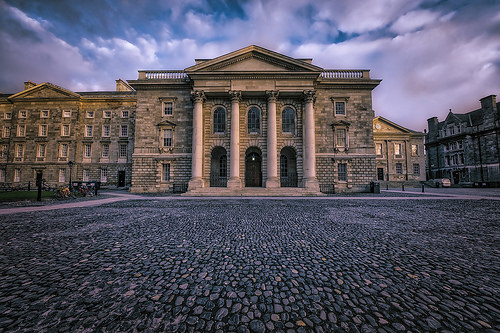 Ireland is the land of my heart. I often tell my husband he would be perfect if only he were Irish. I’ve probably put off blogging about Ireland waiting for the time when I’d visited personally. And trust me I will get there one day, but said nearly-perfect husband undoubtedly worries that if I went he’d never be able to get me to leave.
Ireland is the land of my heart. I often tell my husband he would be perfect if only he were Irish. I’ve probably put off blogging about Ireland waiting for the time when I’d visited personally. And trust me I will get there one day, but said nearly-perfect husband undoubtedly worries that if I went he’d never be able to get me to leave.
I recently read a book set in Dublin (Flying by the Seat of My Knickers by Eliza Watson) and watched Leap Year last night with my children. So I’m in a Dublin state of mind. As a little history lesson, Dublin started as a Viking settlement (must be why I feel such an affinity to Ireland as I’m part Viking) then became the principal city of Ireland following the Norman invasion. So, here’s my travel itinerary should I ever get to visit that fair city.
First, of course, I’d have to go to a pub. I will admit I’m not a Guiness fan but I’d try one in Dublin. Or maybe a whiskey. I love whiskey. To walk it off I’d visit Chester Beatty Library in the grounds of Dublin Castle. Spread over two floors it houses more than 20,000 manuscripts, rare books, miniature paintings, clay tablets, costumes and other objects of artistic, historical and aesthetic importance. Even better, there’s a Silk Road Café on the ground floor where you can get Middle Eastern cuisine. I think it may be hard to get me to leave.
When I finally dragged myself from the library, I’d head over to the National Museum of Ireland, home to the country’s most important archeological treasures. I may be here a while. And what better place to round off a day of cultural enrichment than to visit one last museum—the Irish Whiskey Museum. I knew I’d love Dublin.
Of course all this history and liquid refreshments would call for a little down time, and a great place to chill would be St. Stephen’s Green, a beautiful park. The perfect place to enjoy nature with a spot of people watching. Top marks for it as it’s a park with history as well. Finally, before leaving Dublin, I’d wander the cobbled streets pop in and out of the shops and pubs and just enjoy a city known for its hospitality.
There are several day trips to scenic locations from Dublin, including Glendalough—one of the most impressive monastic sites in Ireland. Set by two lakes, in a glen, the remains include a 30m-tall, 10th-century round tower, a 12th-century, several smaller churches and an “atmospheric” graveyard. Another daytrip would be to Powerscourt Estate an 18th century house and gardens.
Like your history on the prehistoric side? Then head 40 km northwest of Dublin to Brú na Bóinne (the Boyne Palace) which is 1,000 years older than Stonehenge and predates the pyramids of Egypt by six centuries. An interpretive center, the design of which reflects that of the tombs, houses exhibits from the pre-Celtic history of Ireland. There are a couple other daytrips but these are the ones I’d do first, if I ever made it out of the library or whiskey museum.
While I’m off to book my flights to Ireland, let me know if you’ve visited and what you’d recommend. See you back here mid-May.
photo credit: Trinity College sunrise via photopin (license)
Mendoza, Argentina
- Details
- Written by Alexia Alexia
- Hits: 3751 3751
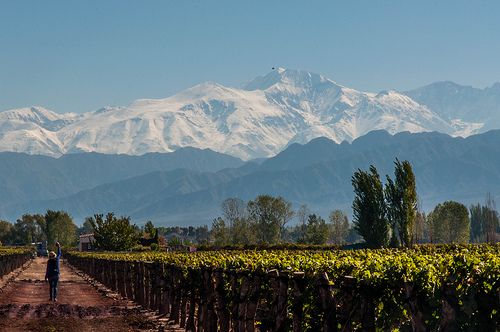 I’ve been spending a lot of time recently, at least mentally, in the Mendoza area of Argentina. I’m working on the edits for my third book in the Vintage Love series, The Tycoon and The Teacher. But even if I hadn’t set a story here, it would still be on my radar as a place I’d love to visit. There’s something about a place known for producing quality wine that draws me. I guess it doesn’t take a genius to work out what that is—a moderate climate.
I’ve been spending a lot of time recently, at least mentally, in the Mendoza area of Argentina. I’m working on the edits for my third book in the Vintage Love series, The Tycoon and The Teacher. But even if I hadn’t set a story here, it would still be on my radar as a place I’d love to visit. There’s something about a place known for producing quality wine that draws me. I guess it doesn’t take a genius to work out what that is—a moderate climate.
Mendoza has not only wine but mountains as well. From the photos I’ve seen, the vineyards seem to kiss the feet of the Andes. In fact, one vineyard is at an elevation of 5,000 feet above sea level. Visiting the wineries would be top of my list of to-do things if visiting Mendoza. But there are plenty of other non-alcoholic activities to enjoy while recovering. Hiking in the Andes is very popular, and if you’re into mountaineering, Mount Aconcagua is the highest mountain outside of Asia, thus the highest peak in both the Western and Southern hemispheres. It’s supposed to be an “easy” climb, in other words, your chances of dying are slightly lower than on other mountains. But altitude sickness and complications from the cold are serious risk factors.
Aside from drinking and climbing, Mendoza region offers a host of indoor and outdoor activities. On the indoor side, you can visit the aquarium, which seems slightly odd for such a land-locked area. There’s also several museums, one of which, Museo Fundacional is built over the foundations of an ancient civilization. Most of Mendoza city was devastated by several earthquakes in the past so few truly old buildings remain.
Outdoors there are lots of parks, cycling tours, horseback riding, river rafting, hikes, cave exploration, skiing, etc. to enjoy. Some of the spas I researched look amazing. I’d definitely try to work a stay at one of those into my itinerary. After all, I’d probably need to detox at some point.
As mentioned above, because the region has been rocked by earthquakes in the past. Mendoza city was rebuilt with large squares and wider roads and sidewalks than elsewhere in Argentina, giving it a relaxed, less frantic feel. Evidently the city comes alive at night when the restaurants and patios fill up and the local population stroll around to see and be seen. However, as the area is in essence a desert, canals flank many of the streets to bring water into the city and parks. Don’t fall in.
Mendoza is considered a fairly safe destination, but as with anywhere keep alert and watch where you’re going and where you put your stuff. Ask at your hotel or other accommodation for places to avoid.
Alas, for the next few years anyway, I will have to be content with my virtual travels. But if you’ve been let me know in the comments what you found interesting about this region.
Until next time (and apologies for the late posting of this blog, I was away in Vegas at a romance writers/readers convention).
Cheers!
photo credit: Viñedos + Andes via photopin (license)
Gimli, Manitoba, Canada
- Details
- Written by Alexia Alexia
- Hits: 4366 4366
 Yes, today I’m talking about Gimli, Manitoba, the place you’ve likely never heard of, or if you have, only in connection with an airplane that ran out of fuel mid-flight and had to land on the drag strip in this small town in the middle of nowhere. For me, however, Gimli was home for eight years and I did the majority of my schooling here. And I can honestly say that living in Gimli is half the reason why I’m a writer today.
Yes, today I’m talking about Gimli, Manitoba, the place you’ve likely never heard of, or if you have, only in connection with an airplane that ran out of fuel mid-flight and had to land on the drag strip in this small town in the middle of nowhere. For me, however, Gimli was home for eight years and I did the majority of my schooling here. And I can honestly say that living in Gimli is half the reason why I’m a writer today.
But let’s go back to the beginning—where the hell is Gimli, Manitoba? When I was a young child, they sold t-shirts with this slogan. Except I didn’t notice the question mark and thought it was a statement. Accurate, I thought, but not the best publicity. The town is actually about 100 km (60 miles) north of Winnipeg, on the shores of Lake Winnipeg. Drinkers of Seagram’s Crown Royal will know it as the location where this whiskey is made. In fact, my father worked for the Seagram plant and that’s why we ended up in Gimli.
Gimli, as evidenced by its name, was originally settled by people with Icelandic heritage and became a popular destination for Icelandic immigrants to Canada between 1870 and 1915. It still hosts Islendingadagurinn or Icelandic Festival Days on the August long weekend where you can sample Icelandic foods, listen to Icelandic stories and poetry, and generally enjoy a small town in festival mode. I took Icelandic class at night school and even sat an exam at The University of Manitoba, one of the few places in the world I imagine where you can study Icelandic outside of Iceland.
Winters in Gimli are brutal. Even the first Icelanders to settle in the area found them hard. The winds are bitter and once I even had to deliver the newspaper wearing a snowmobile helmet because it was so cold my eyes would have frozen without some protection. If you’re much hardier than I am, you can snowmobile, cross-country ski, or go ice-fishing on the lake which freezes over completely in the winter, despite being the eleventh largest freshwater lake in the world. I told you it was cold. When I was in high school, as a fundraiser, they used to put an old car in the harbour and then take bets on when it would fall through the ice. I don’t know what you won if you guessed correctly, aside from knowing that spring had finally arrived. The only thing I did in Gimli during the winter was read. I’m sure I read almost every fiction book in the public library. Thus my love of reading and hence writing was born. For that, I thank you, Gimli.
Aside from reading, the other great thing about Gimli was sailing in the summer. My dad had a little boat and my friend had a bigger one. So I spent most of my summers on the water, finally putting those Manitoba winds to good use. You always had to keep one eye on the sky, though, because summer storms were as violent as the winter was harsh and they came up suddenly. Thankfully, they are also short lived so sheltering for half an hour was usually all that was required.
If you are interested in more about Manitoba, my book Her Faux Fiancé is set in the fictional town of Akureyri, Manitoba, although Gimli does play a starring role. And if you do happen to be in Manitoba, and the weather is fine, make the trip north. Tell them Alexia sent you. They’ll have no idea who that is, still…
Until the next blog post, I wish you happy travels.
Revelstoke, British Columbia, Canada
- Details
- Written by Alexia Alexia
- Hits: 4110 4110
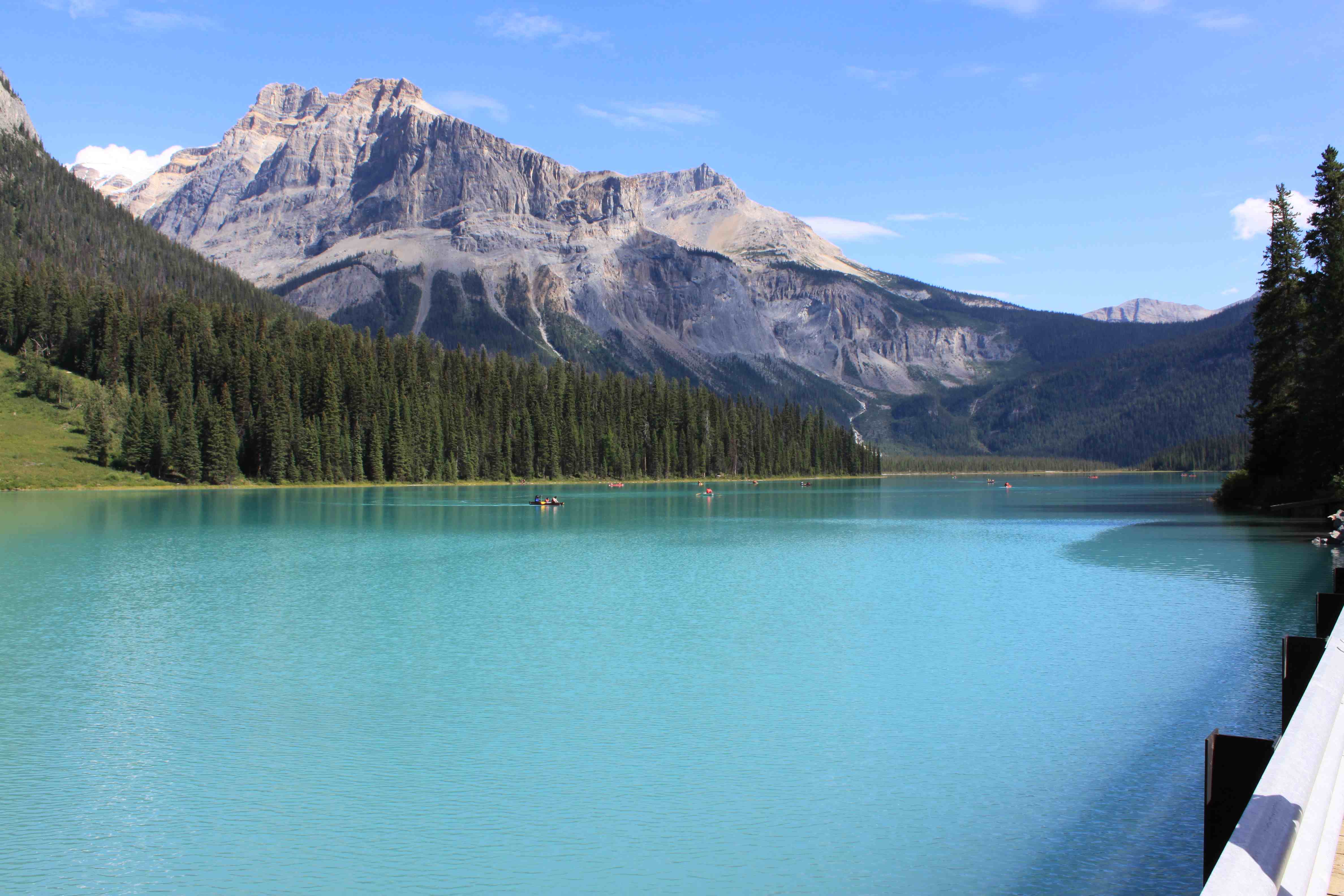 We’re on the final leg of last year’s family summer holiday. Funnily enough, I’ve now started to plan this year’s getaway. Anyhow, we left Banff and headed toward Revelstoke, our final stop before home. There is plenty to see on the way to Revelstoke, though, so if you’re doing this drive, I urge you to take your time and stop to see the sights along the way.
We’re on the final leg of last year’s family summer holiday. Funnily enough, I’ve now started to plan this year’s getaway. Anyhow, we left Banff and headed toward Revelstoke, our final stop before home. There is plenty to see on the way to Revelstoke, though, so if you’re doing this drive, I urge you to take your time and stop to see the sights along the way.
The most spectacular of these is Emerald Lake. As you take the turn off the Trans-Canada Highway toward Emerald Lake (about an hour West of Banff), check to see what the car park is like at “Natural Bridge.” If it’s relatively empty, stop here first. Natural Bridge is where the Kicking Horse River has eroded a tunnel under the rock. You can walk from one side of the river to the other. But please, people, be careful. The rocks are slippery and if you fell into that water I doubt you’d survive. Also, I’ve been told that during high spring runoff the water actually cascades over the bridge, so you wouldn’t see it anyway. Still, it’s a nice place for some photos. 
Emerald Lake is another twenty to thirty minute drive from the highway, depending on how slow the car in front of you is travelling. It’s like the road to Maligne Lake all over again. The other problem with Emerald Lake is the parking lot is relatively small. Be prepared to park on the shoulder of the road and walk the rest of the way. Or get there early. It’s always been my dream to stay in one of the cabins on the lake. I think the star gazing would be spectacular with no lights anywhere near, unless you run into that pesky full moon problem we had in Clearwater.
This is a popular stop on all the coach tours so there’s no escaping the crowds, another reason to stay overnight. Canoeing is a popular attraction here, and the red canoes against the emerald green waters with the gorgeous mountain backdrop is beautiful. My photo really doesn’t do the water colour justice.
From Emerald Lake we headed west again, stopping in Golden for lunch. Golden is a great little place but unfortunately, we didn’t have time to explore. There’s a ski resort here and probably lots of outdoor adventure activities. The waiter at the restaurant was from East London, so he and my husband had a great time talking about the British Premier League football season that had started that day. Even on holiday I can’t get away from it.
We arrived in Revelstoke mid-afternoon and stayed at the Sutton Place Hotel at the Revelstoke Mountain Resort. Of all the places we stayed, this was the most luxurious. We had a three bed, two bath condo with two decks overlooking the pool. The resort is about a fifteen minute drive from Revelstoke town proper so once you’re there, there’s not a lot around. They’re still building but as of our visit there was one restaurant, one café, and one ski shop. You can take the gondola up the mountain and on the weekend have brunch up there or do some hikes. Or you can rent mountain bikes and explore the area. In our original plan, we had intended to go to an outdoor adventure park (about 45 minutes west of Revelstoke), but to be honest we were pretty explored out so we just sat by the pool. Revelstoke town itself is pretty dead. We were there on a Sunday and almost nothing was open. We ate lunch at a food van and then bought groceries at the store so we could make our own dinner. The rest of the time we sat by the pool. In a way it was a perfect ending to our holiday. A chance to actually relax.
And that was last year’s family holiday. I hope you enjoyed coming on our adventure. Pop back on April 1st for my next post. Cheers!
Banff, Alberta, Canada
- Details
- Written by Alexia Alexia
- Hits: 4020 4020
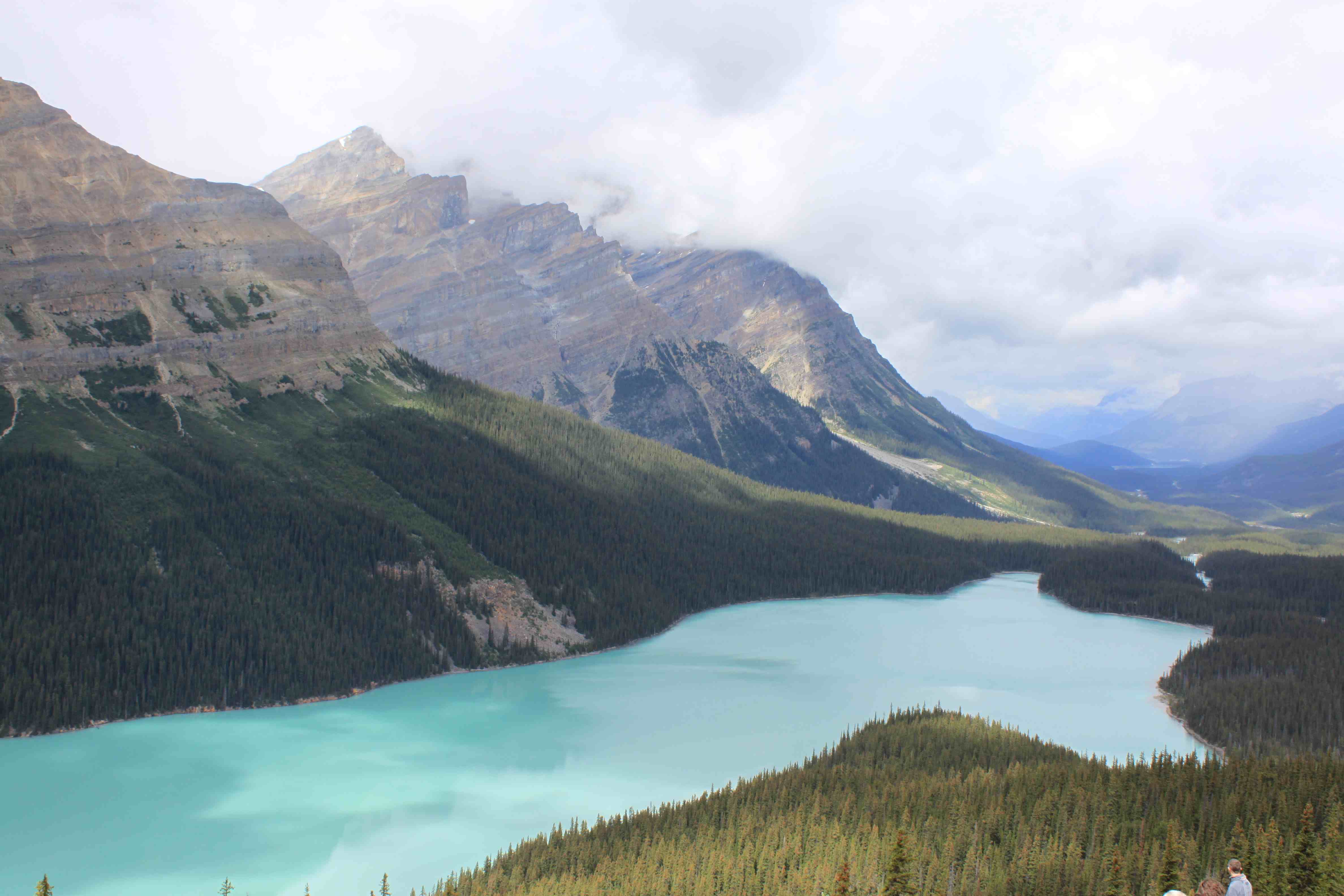 I’ve been to Banff a few times now and I think I’m done. Don’t get me wrong, it’s a beautiful place with lots to do and if you’re visiting Canada it should definitely be on your itinerary. But as a Canadian, it seems wrong. It’s kind of like our version of Vegas, without the lights. It just seems fake somehow. And it shouldn’t, it was an original railroad town and the Fairmont Banff Springs Hotel is truly awesome, if not slightly over priced.
I’ve been to Banff a few times now and I think I’m done. Don’t get me wrong, it’s a beautiful place with lots to do and if you’re visiting Canada it should definitely be on your itinerary. But as a Canadian, it seems wrong. It’s kind of like our version of Vegas, without the lights. It just seems fake somehow. And it shouldn’t, it was an original railroad town and the Fairmont Banff Springs Hotel is truly awesome, if not slightly over priced.
But let’s backtrack a bit. We left the last blog post in Jasper and were headed down the Icefields Parkway. If you fancy seeing glaciers, this is the road for you. There were a couple of options for tours. One you could walk on a glass walkway kind of like the one over the Grand Canyon. This looked interesting but when we drove by it is literally right beside the road. Didn’t seem worth the money. The other tour is to walk on the Athabasca glacier. I’ve done glacier walks in New Zealand so again it wasn’t something that appealed to me, especially at the cost.
What was definitely worth the time and effort was the walk to see Peyto Lake (see picture). It’s a busy car park but if you circle enough times you’ll probably find a spot. Again, the viewpoint is extremely crowded, especially if you arrive at the same time as one of the numerous bus tours. But it is still possible to get some nice photos without too many people encroaching. The colors of the lake are truly spectacular and photos don’t do it justice.
Heading south from Peyto Lake you end up at the Trans Canada highway just west of Lake Louise. A forty minute drive east then brings you to Banff. As mentioned, Banff is not a typical Canadian town, it’s gone tourist. Don’t get me wrong, it’s a spectacularly beautiful town with a mountain that seems to just sit at the end of the main street, but every shop sells tourist tat, some of it very nice, but all just souvenirs. And the restaurants are expensive and not very good, at least the ones we tried. There’s tons of stuff to do: white water rafting and horseback riding and hiking and boat tours but as we did all that in Jasper so we skipped it here.
Lake Louise is about a thirty minute drive west from Banff. Take the Parkway Boulevard and not the highway, it’s much more scenic. There are loads of hikes to do off this as well. I dragged my children up Johnson Canyon to the first waterfall which was very nice but again, really, really crowded. Lake Louise itself was also packed. We had intended to walk up to the Lake Agnes Tea House which I had done years ago with a friend. But it’s a four hour hike and it had taken us an hour to get a parking place so we passed on that. Maybe next time. If you decide to visit Lake Louise, go early.
Next stop on our summer adventure was Revelstoke with a couple of stops on the way. I’ll blog about those places next time. Cheers!
Jasper, Alberta, Canada
- Details
- Written by Alexia Alexia
- Hits: 3741 3741
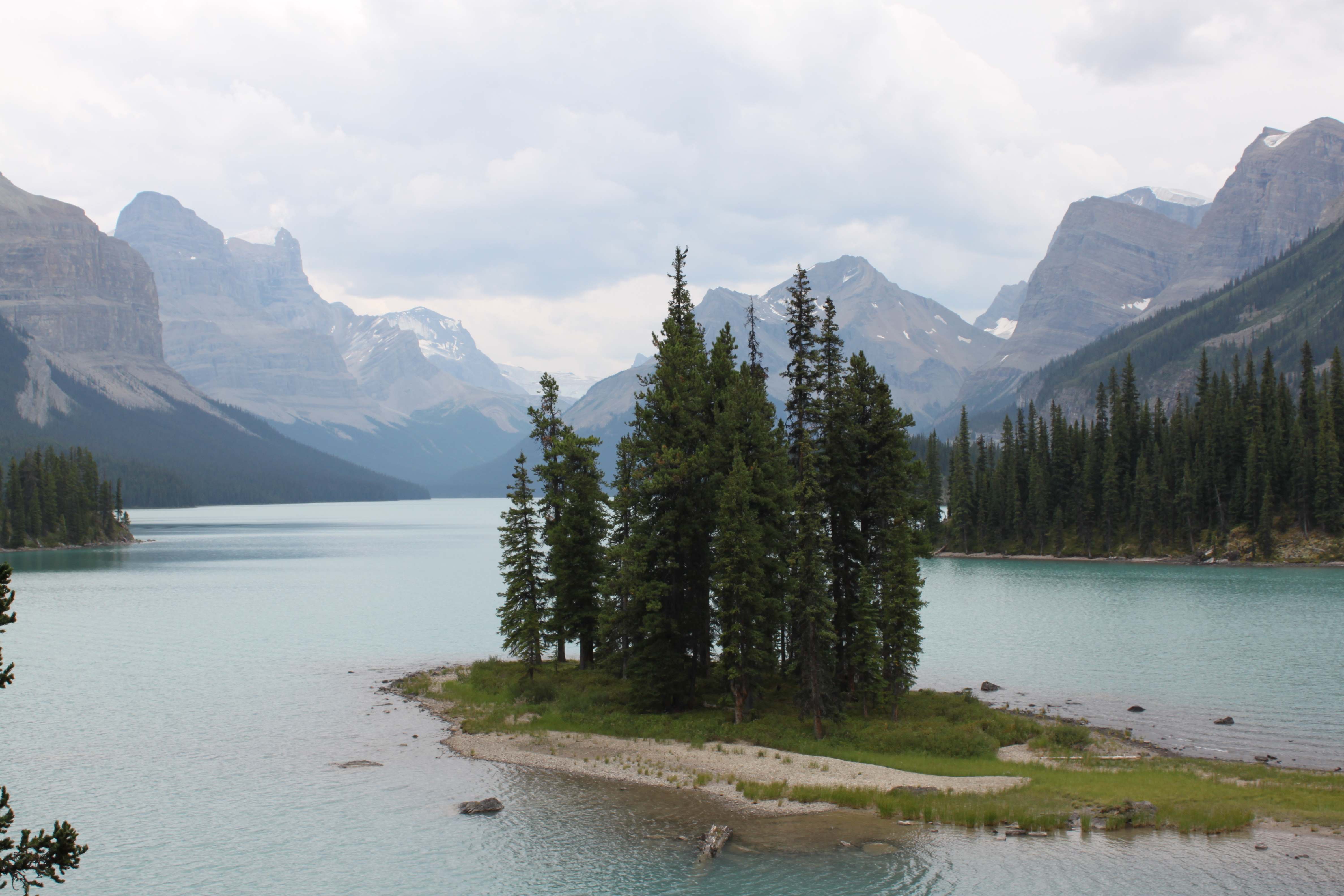 With no clear direction on where to go next, we’re travelling back in time to last year’s summer holiday. I blogged about our first stop, Clearwater, BC and now we’re going to explore our second destination—Jasper. The town of Jasper is located within a National Park so you have to pay an entrance fee, depending on how long you plan to stay. It would be easy to spend a week here, there is so much to do. But with limited time and money we had to squeeze everything we could into 3 days.
With no clear direction on where to go next, we’re travelling back in time to last year’s summer holiday. I blogged about our first stop, Clearwater, BC and now we’re going to explore our second destination—Jasper. The town of Jasper is located within a National Park so you have to pay an entrance fee, depending on how long you plan to stay. It would be easy to spend a week here, there is so much to do. But with limited time and money we had to squeeze everything we could into 3 days.
Our accommodations in Jasper were much smaller than in Clearwater and much more expensive. If you intend to visit the area, book well in advance. By the time I booked, 3 months before we left, there was only one place that could fit the six of us. Still, it was a nice place, individual log cabins with an easy walk to town. Speaking of town, Jasper is mostly tourist shops or mountain bike rental/sports clothing stores, but there is one must-stop place: The Bear Paw Café. My husband went there every single day. Make sure you check out the amazing cake ideas hanging from the ceiling.
We also went on our first white-water rafting expedition. As we have a seven-year-old, we took the tamest tour, but still it was fun. Of course, rafting down a river fed by glaciers and snow run-off, the water was dang cold when you got splashed but the dry suits kept us warm. We had a great time. But then we had to race to Maligne Lake to catch our 3pm boat cruise to Spirit Island. And when I say rush, I mean crawl at 20km/hour behind a long line of motorhomes driven by people who’ve never piloted anything larger than a Smart Car. And don’t get me started on those who stop right on the road and exit their vehicles to take photos of the wildlife.
Maligne Lake is well worth the hour drive (even though it’s only 45km from Jasper) but beware it is extremely crowded. It took us almost as long to find a parking space. And if you want to do the boat cruise then book in advance and get there in time as the cruises are full. You can also rent canoes and paddle yourself, in fact if you want to go to the far end of the lake you have to paddle as motor-powered boats are forbidden beyond Spirit Island. But that’s a two or three day adventure that should be undertaken only by the most outdoorsy and experienced.
Spirit Island is one of the most iconic photographs of the Canadian Rockies, the original image was part of a photo competition sponsored by Kodak. By the way, it’s not even an island, it’s a peninsula. Still, it is pretty. The boat tours give you about ten minutes to take the little walk and view it from several angles. There’s a few great spots to take family photos as well.
Another adventure we went on in Jasper was horse-back riding. I’d done it a lot in my youth but hadn’t been on a horse in twenty years. Again, it’s something you generally need to book in advance. But when we were due to go, it was pouring rain, so I called the stables and they very kindly allowed us to change our reservation to the afternoon when it was drier. In fact there was only myself and my four children in our group. My husband rented a mountain bike and went cycling while we were riding.
After our energetic day, a swim in hot springs seemed like a great way to ease some tired muscles. So we drove to Miette hot springs. Again, although it is only 35km away, it took over an hour, due in part to road works on the highway. If you’re not used to mountain driving, go before sunset as the road is narrow and twisting. Also, don’t do what my husband did and forget to bring your swimsuit, although he was able to rent one there. The pools are crowded but still felt great after being jostled atop a horse for an hour.
Next we took the Icefields Parkway down to Banff. I’ll blog about that next time. Have you been to Jasper? What would you recommend doing?
Loire Valley, France
- Details
- Written by Alexia Alexia
- Hits: 3505 3505
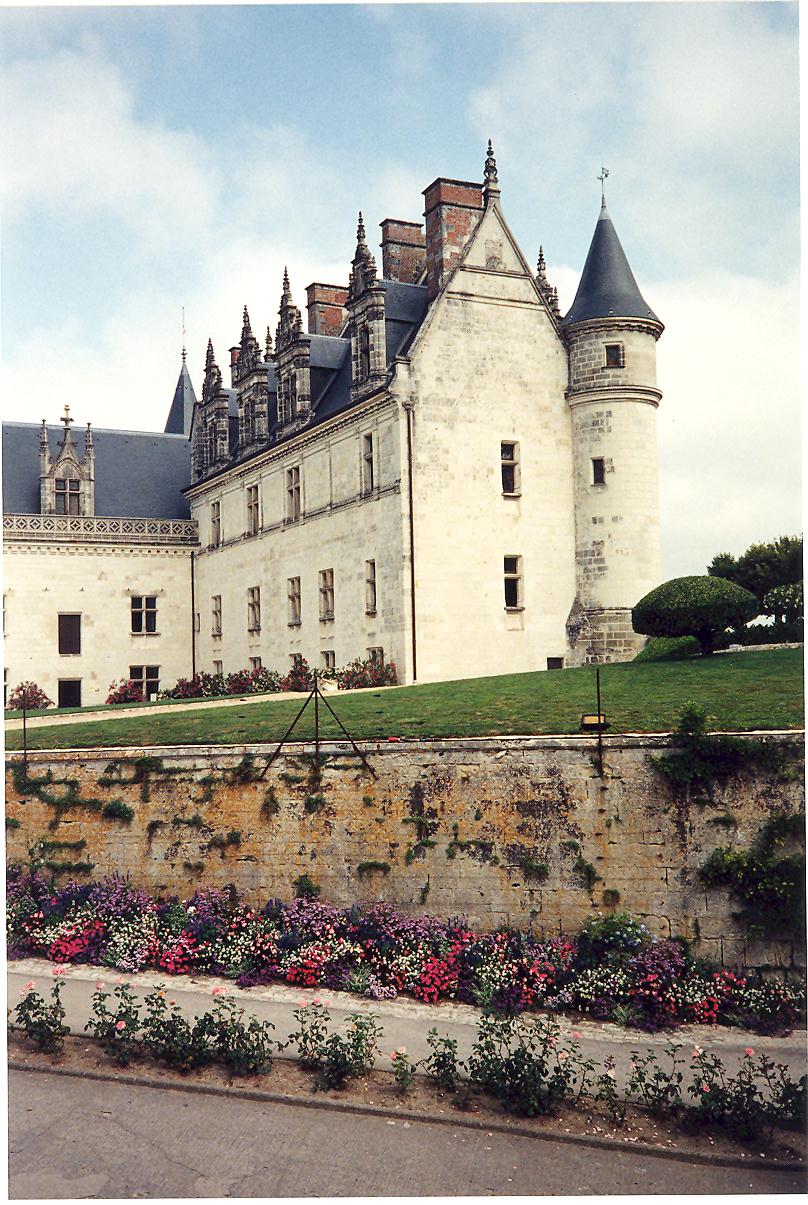 History + amazing architecture + great food + oodles of wine = my dream destination. The Loire Valley doesn’t disappoint. My husband and I spent a weekend in the Loire, based in the town of Tour, and I’ve longed to go back ever since. We took the Eurostar from London, hopped on a TGV train in Paris and were in Tour by late afternoon. Now, things may have changed since we visited, but I recommend you stay in a hotel away from the train station. The hotel I originally booked was so disgustingly dirty that I cancelled and we moved to another one across the street. Except that wasn’t much better. However when we went in search of dinner, we discovered the old town and the many quaint boutique hotels there. I’d stay in one of those next time. The town of Tour is interesting and we wandered around for several delightful hours. Dinner was also exquisite, taking over three hours to eat. That’s one of my favorite things about eating in France, you never feel rushed.
History + amazing architecture + great food + oodles of wine = my dream destination. The Loire Valley doesn’t disappoint. My husband and I spent a weekend in the Loire, based in the town of Tour, and I’ve longed to go back ever since. We took the Eurostar from London, hopped on a TGV train in Paris and were in Tour by late afternoon. Now, things may have changed since we visited, but I recommend you stay in a hotel away from the train station. The hotel I originally booked was so disgustingly dirty that I cancelled and we moved to another one across the street. Except that wasn’t much better. However when we went in search of dinner, we discovered the old town and the many quaint boutique hotels there. I’d stay in one of those next time. The town of Tour is interesting and we wandered around for several delightful hours. Dinner was also exquisite, taking over three hours to eat. That’s one of my favorite things about eating in France, you never feel rushed.
Also, when we went to book a sightseeing tour of the area (a Tour tour if you will), we discovered that they all returned later than the departure time of our train back to Paris. The helpful person at the Visitor’s Information Centre suggested that we could hire a taxi for the day for the same cost as the two of us on the coach. So we took her recommendation and man were we glad we did. First of all, the taxi was a brand new E-class Mercedes, so we rode in luxury. Second, we could go where we wanted, when we wanted. There were a few places I was really keen on seeing, such as several of the chateaux including Chenonceau and d’Amboise. They were truly beautiful and if you’re lucky enough to travel without a companion who politely says every twenty minutes, “Have you seen enough of his old place yet?” you could happily spend a day at each destination. Of course, you’d be there with five gazillion other tourists so may prefer to visit some of the lesser known castles, or time your visit to the most popular ones for when the coach tours are elsewhere. Your taxi driver/guide will probably know.
The other great thing about getting a private tour is that he’ll likely take you to places the coaches don’t go. For example, we asked to visit a winery. So he took us to his friend’s place. I didn’t care, it was great being the only ones there and the wine was fabulous. Ditto lunch, rather than a tourist trap, we ate at a restaurant where the locals went, not a bus load of tourists in sight.
With my love of the Loire Valley in full bloom, it seemed the ideal setting for the first in my Vintage Love series. You can read excerpts of the first two books in the series elsewhere on my website, just click on the Read More bit at the bottom of The Vintner and The Vixen and The Playboy and The Single Mum. The third book in the series will be published in the summer (a hint for that one, the action moves to the vineyards of Mendoza, Argentina).
I hope you’ve enjoyed this brief tour of the Loire Valley. Where would you like to go next post?
Abu Dhabi, United Arab Emirates
- Details
- Written by Alexia Alexia
- Hits: 4281 4281
 For those who follow me on social media, especially those who have attended any Facebook parties I’ve been at, you know that United Arab Emirates is my fantasy destination. The only caveat is that I want to visit the country with money, oodles and oodles of money, so I can stay at the posh hotels, eat at the posh restaurants, hire a sports car to drive around in and basically look like I belong. Now I know Abu Dhabi and Dubai has its share of poor and a huge migrant work population who may or may not be treated fairly, but hey, it’s my fantasy, can I please have it my way?
For those who follow me on social media, especially those who have attended any Facebook parties I’ve been at, you know that United Arab Emirates is my fantasy destination. The only caveat is that I want to visit the country with money, oodles and oodles of money, so I can stay at the posh hotels, eat at the posh restaurants, hire a sports car to drive around in and basically look like I belong. Now I know Abu Dhabi and Dubai has its share of poor and a huge migrant work population who may or may not be treated fairly, but hey, it’s my fantasy, can I please have it my way?
Abu Dhabi is the final stop on the F1 circuit that we have been trailing around since last March. Due to the temporary suspension in my blog in September I got a bit behind the race schedule. I did watch the race at the Yas Marina track but I will admit it was three weeks after it actually took place. That’s the problem when the championship is already decided, I as well as many others I assume, took our foot off the accelerator and cruised the remainder of the season. But well done, Nico for winning. I can’t wait for the next season to start.
Back to Abu Dhabi, what is it about this city that makes me so want to go there? I think it is the air of wealth and power. After all, I write alpha heroes with money to burn, just the type to hang out in Abu Dhabi for a weekend. And the architecture! While it sits in the shadow of its neighbouring city of Dubai, there are enough interesting and innovative buildings to keep me busy for a few days. Unfortunately, many of those hours may be spent sitting in my supercar as Abu Dhabi was planned for a population of about 600,000 but now houses about 1.5 million so traffic congestion is a big problem. Fun fact for your next cocktail party, according to Wikipedia (which I know is not the most reliable of sources), almost 80% of the population in the emirate is ex-pat or foreign.
I hadn’t realized that Abu Dhabi is actually on an island in the Persian Gulf. Although the city is second in size to Dubai, it is the capital and thus houses many governmental offices and buildings. And even though the area has been inhabited for millennia, the oldest historical site I could find in my research was the Old Fort which dates back to the 1760s. There is the Al Ain museum that houses archaeological findings from the area. As the city is on an island, getting to a beach doesn’t appear to be a problem. The Corniche has a promenade 8 kilometers long (that ought to make my Vivofit happy). There’s also at least one huge water park if you happen to take the children (not in my fantasy) or enjoy watersports yourself.
And, it wouldn’t be an F1 destination without an amazing track to race around. Abu Dhabi also houses Ferrari world if you happen to be into the red cars. But the biggest attraction for many, including my husband, would be that Star Wars: The Force Awakes filmed the scenes on the planet Jakku near Abu Dhabi.
So, that ends our trip to UAE for now, and our tour of Formula 1 race destinations. Next blog post we’re going to head over to the Loire Valley in France, setting for much of The Vintner and The Vixen which releases on January 25th. Have you pre-ordered your copy yet?
See you back here on February 1st. Oh, and if you’ve been to Abu Dhabi let tell me your favorite place to visit.
photo credit: 65 Dubai Marina Dhow cruise via photopin (license)
Rio de Janeiro, Brazil
- Details
- Written by Alexia Alexia
- Hits: 3547 3547
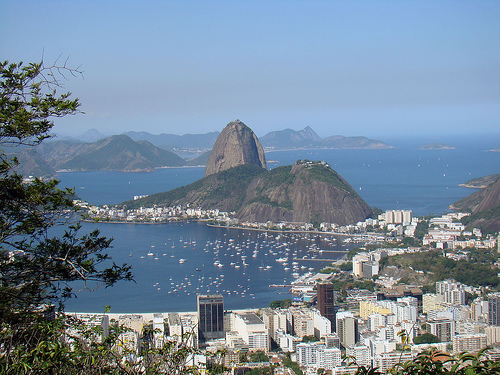 Who wants to be in Rio today? New Years should definitely be a mid-summer holiday. All this loitering outside when the weather is freezing is nuts. Not that I do the outdoors stuff much in winter. But I’d like it to be an enviable option. Anyway, still sticking with our Formula 1 theme from 2015, the penultimate race for the season was in Rio. I like the Brazil Grand Prix, it has history and panache.
Who wants to be in Rio today? New Years should definitely be a mid-summer holiday. All this loitering outside when the weather is freezing is nuts. Not that I do the outdoors stuff much in winter. But I’d like it to be an enviable option. Anyway, still sticking with our Formula 1 theme from 2015, the penultimate race for the season was in Rio. I like the Brazil Grand Prix, it has history and panache.
I’d love to visit Rio, although from what I’ve seen I’d feel seriously overdressed on the beaches. Still, it would be amazing to stroll down Ipanema and Copacabana. Walking along beaches has to be one of my most favourite things. After I tired of the sand between my toes, I’d visit the Christ the Redeemer statue on top of Corcovado. And then take the cable-car up to Sugar Loaf Mountain. If I were more flexible I’d love to take a samba lesson. Man, I should have visited Rio twenty years ago.
With dancing off the table, or the floor for that matter, my visit to Rio would more likely include culinary delights. Lonely Planet’s website has some great recommendations for places to eat. There are also art galleries to see. Instituto Moreira Salles looks like an interesting place. It’s a cultural center with exhibitions showcasing some of Brazil’s best artists and photographers. And if you tire of staring at the walls, you can wander around the artificial lake and flowing river, designed by Brazilian landscape architect Roberto Burle Marx. Hungry? Pop to the cute little café that serves lunch and afternoon tea before browsing the craft shop for a souvenir.
Could a trip to Brazil be complete without taking in a football (soccer) match? Not sure I’d like the crowds though. If you do go, cheer for the team everyone around you is cheering for, you’ll be safer that way. As Rio was founded in 1565 there must be historical things to see but it was hard to find on the travel websites I visited. With the tropical climate, it may be that many of the historical buildings haven’t survived well. Or I could just be looking in the wrong place. The Trip Advisor website has some great itineraries you could follow if you have limited time in Rio.
Rio is on my bucket list, but as my bucket is large and rather full, I may not make it. If you want to travel vicariously, like I do most of the time, Carmen Falcone’s contemporary romance Kidnapping the Brazilian Tycoon is well worth a read. And as Carmen is originally from Brazil, you can bet it’s authentic.
Have you been to Rio? I’d love to hear what you think and what you’d recommend. Next stop is the final F1 race in Dubai. And you all know I’d love to go there. So come back on January 15 and let’s discover this city of amazing architecture together.
photo credit: Pão de Açúcar via photopin (license)
Mexico City, Mexico
- Details
- Written by Alexia Alexia
- Hits: 3367 3367
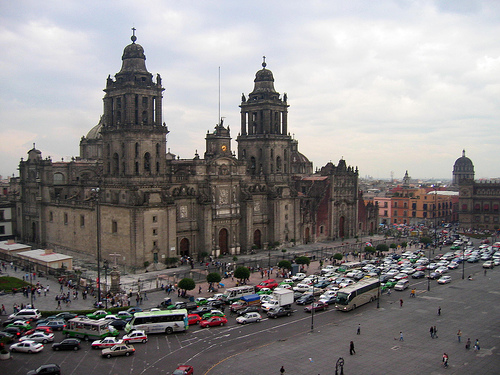 Formula 1 returned to Mexico after twenty-three years away and the race did not disappoint. There seemed to be great enthusiasm from the fans as well, so hopefully it will become a permanent fixture on the F1 calendar. I haven’t been to Mexico although I know plenty of people who have. My husband has been turned off by all the reported murders, robberies and gang violence so refuses to go. Maybe I’ll just have to leave him at home.
Formula 1 returned to Mexico after twenty-three years away and the race did not disappoint. There seemed to be great enthusiasm from the fans as well, so hopefully it will become a permanent fixture on the F1 calendar. I haven’t been to Mexico although I know plenty of people who have. My husband has been turned off by all the reported murders, robberies and gang violence so refuses to go. Maybe I’ll just have to leave him at home.
Anyway, if I did go to Mexico, I’d want to, as much as possible, see the real Mexico, not just hang around in a resort and eat the Canadian version of Mexican food. Of course I’d want to explore the Mayan ruins and visit as many of the historical and archeological sites as possible. I saw on a website that one of these is a seven hour trip from Mexico City so that would be my first destination.
For this post, however, rather than focus on the tourist attractions, I’m going to comment on some of the “Strange Things About Mexican People.” I found this on the MexicoCity.com website but can’t personally testify as to its authenticity (by the way, I love how the list goes 1, 3, 2, 4, 5). Feel free to share your views (kindly) on my comments section. The first “strange” thing it claims is that Mexican people stare at others longer than is considered polite in other cultures. I’m okay with that, means I get to look back as well, although I probably would be checking in a mirror to make sure my top isn’t on backwards or completely see-through.
Evidently quite passionate public displays of affection are acceptable, so if you’re on honeymoon (or still madly in love with your partner) then use all that precious time wasted while waiting in line or on the bus to show them just how much you care. If you’re a little shy about your affections, you may want to bear in mind point one, people will stare. The third “strange” thing is that Mexicans allegedly love their hair gel. Consider it one less thing to pack as it should be readily available there. Boys use copious amounts to keep their hair in place and girls use it to cement errant strands from flapping out of their ponytails. You may also want to keep this in mind if your PDA’s in public involve a local and you like to run your fingers through the other person’s hair – bring something to wipe your hands on afterwards.
Point four involves lateness, allegedly Mexicans only show up for football (soccer) matches and bullfights on time. So if punctuality is your thing, you may want to bring along someone to suck face with while you’re waiting for your Mexican friend. Oh, and sorry, Mexico but you haven’t got the market cornered on this one, loads of nationalities have a very flexible view of time. Lastly, the traffic in Mexico (not sure if this just applies to Mexico City or all the large metropolises in the country) is insane with drivers disregarding traffic lights and honking their horns continually. I’ve been to Italy, Egypt and the Philippines, I don’t think you can convince me it is worse than that. One trick I’ve learned from those places, if you’re a pedestrian and trying to cross the street, do so with a local.
Well, if those are the five strangest quicks about Mexico, it sounds like a great place to visit. Next blog post we’ll head to Rio de Janeiro, home to the penultimate race of the 2015 F1 season. See you on January 1st.
photo credit: Mexican National Cathedral - La Catedral Nacional de México via photopin (license)
Austin, Texas, USA
- Details
- Written by Alexia Alexia
- Hits: 8067 8067
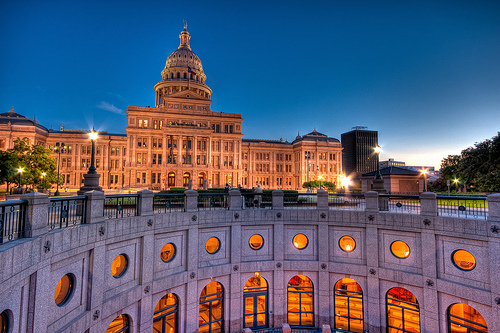 The F1 race in Austin was over a month ago and was where Lewis Hamilton clinched the title (congrats, Lewis). It’s also another place I haven’t been, although I have been to Texas. But here’s the thing, and please excuse this minor rant, the USGP is the one that irks me the most. Here’s why. First, it’s called Circuit of the Americas, like there aren’t three other Grand Prix circuits in the Americas (Canada, Mexico and Brazil). Get over yourself, CoTA. Second, I know the Formula 1 fan base is predominantly male, but every other track manages to elegantly dress their “grid girls”. Not CoTA, nope, their women are dressed like skanks, even my husband commented on it. Get some class, CoTA. On the plus side, NBC managed to spend more of the race actually showing what was happening on the track as opposed to last year when we were constantly shown celebrities in the garage. But maybe next year you could afford a booth for your commentators, as opposed to a table on the side of the track, so we could actually hear the commentary.
The F1 race in Austin was over a month ago and was where Lewis Hamilton clinched the title (congrats, Lewis). It’s also another place I haven’t been, although I have been to Texas. But here’s the thing, and please excuse this minor rant, the USGP is the one that irks me the most. Here’s why. First, it’s called Circuit of the Americas, like there aren’t three other Grand Prix circuits in the Americas (Canada, Mexico and Brazil). Get over yourself, CoTA. Second, I know the Formula 1 fan base is predominantly male, but every other track manages to elegantly dress their “grid girls”. Not CoTA, nope, their women are dressed like skanks, even my husband commented on it. Get some class, CoTA. On the plus side, NBC managed to spend more of the race actually showing what was happening on the track as opposed to last year when we were constantly shown celebrities in the garage. But maybe next year you could afford a booth for your commentators, as opposed to a table on the side of the track, so we could actually hear the commentary.
Gripe over, let’s see what’s to do in Austin. According to Trip Advisor, there are a lot of nice buildings in Austin. But I kind of knew that already because they showed them during the race. Like you do. Not. Evidently there’s a river or lake in the city (not quite sure why they can’t work out which it is). Just looked it up, Lady Bird Lake a reservoir on the Colorado River, so a fake lake on a river. Go on, work that into your next cocktail party conversation. Anyway, you can walk or ride a bike along the shores of the fake lake. I imagine it’s quite pleasant on a good day but from what I’ve seen or read if you’ve done other water-side promenade walks then this one may be a bit of disappointment.
The number three thing to do in Austin is visit the LBJ library. Can’t be too bad a place if a library is one of the top attractions. I’m not American and I’m not interested in politics but if you are the reviews all say it’s a great place to visit. Barton Springs Pool is ranked number five but it would probably be my first destination in Austin. I especially liked the reviewer who said she read a book while her family swam. My kinda place.
Of course, the next item on the Trip Advisor list is a place called The Driskill, the first review says, “Great building, Awesome Bar.” I’m booking my flight. The one thing I would do if I went to Austin, which won’t be on any top ten attractions list, is get a copy of the real estate paper and check out the houses. A few years ago, my husband used to watch one of those property flipping shows and this annoying guy used to go around and buy houses for like $10,000. When you live in a place where $1,000,000 will get you a tear down, I’d love to see what I could buy for that.
There you go, Austin, Texas. Interesting place, shame about the race. Next post we’ll head to Mexico City. See you back here on December 15th. In the meantime, if you’ve been to Austin, feel free to comment on what you found interesting.
photo credit: Capitol at Dusk via photopin (license)
Sochi, Russia
- Details
- Written by Alexia Alexia
- Hits: 3215 3215
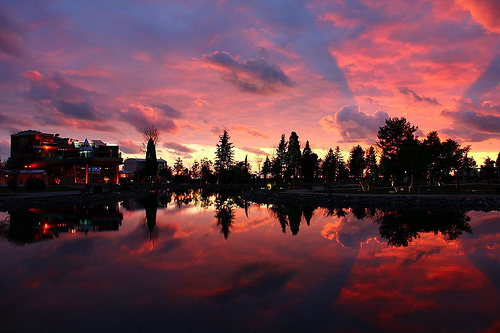 We’re leaving all politics and athletic doping scandals at the door and concentrating solely on the landscape and attractions around Sochi. It’s not a place I’ve visited personally but it is on my bucket list. When I was in Russia I wanted to go to Sochi but time, money, and political unrest put paid to that idea. It’s a region that fascinates me, and I can’t explain why.
We’re leaving all politics and athletic doping scandals at the door and concentrating solely on the landscape and attractions around Sochi. It’s not a place I’ve visited personally but it is on my bucket list. When I was in Russia I wanted to go to Sochi but time, money, and political unrest put paid to that idea. It’s a region that fascinates me, and I can’t explain why.
Looking at pictures and the setting of Sochi, it reminds me of my hometown Vancouver. Both hosted the Winter Olympics due to their proximity to skiable mountains with a large enough city base to accommodate the other sports.
When preparing for these blog posts about places I haven’t personally visited, I usually go on Trip Advisor, Lonely Planet, or other travel sites and investigate what’s popular in the area. I often do additional research like I would if I were visiting the place myself. This time, however, when I researched Sochi, the majority of the attractions were related to winter sports, which don’t really interest me. My skiing days are over. Winter sports for me include reading, lifting weights eight ounces at a time (in a wine glass) and trying to stay warm.
So for this post, we’re going to look at some interesting Sochi facts for you to subtly drop into conversations during your next boring dinner party. First fact, especially interesting to me with my love of history, is that Sochi dates back to ancient Greek and Roman times when it was inhabited by the Zygii people. I looked up the Zygii as I’d never heard of them before and evidently they were nomadic shepherds, pirates and brigands who were conquered in the 6th and 7th centuries by the Scythians and Cimmerians who were more advanced militarily.
Second factoid, in the 15th century the Sochi area was called Ubykhia and was controlled by local mountaineer clans. It became part of Russia in 1829 after the Caucasian and Russo-Turkish Wars. Third, in the early 1900s Sochi grew in popularity as a Russian resort city and in 1914 it was granted municipal rights. Fourth, Sochi is considered to have a humid, sub-tropical climate (sounds like the perfect place to hold the winter games, doesn’t it). Fifth, the city is known for its sports facilities and tennis stars Maria Sharapova and Yevgeny Kafelnikov both trained in Sochi.
There you have it, five fascinating facts about Sochi. Following the Russian Formula 1 race, the teams headed to Austin, Texas for the US Grand Prix. I have been to Texas but not for many years, so if you have any insider tips you’d like me to share for my next post, please leave a comment here or use the Contact Me page on my website.
See you back here on December 1st. Cheers!
P.S. In the meantime, have fun reading my latest book, The Greek’s Stowaway Bride that releases on Monday. Set in the Eastern Mediterranean, it’s an action-packed, fun-filled adventure to love.
photo credit: Atos - by evening red Atos experiences the Dutch Olympic House via photopin (license)
Tokyo, Japan
- Details
- Written by Alexia Alexia
- Hits: 4144 4144
 Due to the temporary suspension of my blog, we’re only up to the Japanese Grand Prix on our spotlight of Formula 1 races around the world. And I realize that Tokyo is not the closest city to Suzuka where the race is held, but as the capital and largest city in Japan we’ll concentrate our visit here.
Due to the temporary suspension of my blog, we’re only up to the Japanese Grand Prix on our spotlight of Formula 1 races around the world. And I realize that Tokyo is not the closest city to Suzuka where the race is held, but as the capital and largest city in Japan we’ll concentrate our visit here.
I’ve never been to Tokyo, or Japan. In all honesty, I’ve never really wanted to go. Having said that, if someone offered me a free ticket and accommodation, I’d be off in a heartbeat. So, imagining that someone has given me said free trip, let’s check out the top rated things to do in Tokyo. Ready?
First choice, according to Trip Advisor, is the Shinjuku Gyoen National Gardens (see photo). From what I’ve read it sounds like New York’s Central Park or London’s Hyde Park, a place to escape the noise and chaos of a big city. There seems to be a small fee to enter or you can pay an astronomical sum for a tour. Second on Trip Advisor’s list is a place called Meiji Jingu which appears to be a Shinto Shrine surrounded by gardens. Sounds also like a great place to people-watch and possibly experience some traditional Japanese culture.
Okay, third on the list is a cooking class. If you know anything about me, you know I dislike cooking (even though I’m quite good at it), so, that wouldn’t be on my holiday to-do list. Fourth is Asakusa, a traditional neighbourhood with old fashioned shops. According to the comments, it’s quite busy and touristy. Maybe visit it first then escape to one of the parks mentioned above. The fifth most popular tourist attraction is Senso-ji Temple which is in the Asakusa neighbourhood. It has a five-story pagoda and other interesting photo opportunities but allegedly is very busy. Visiting at night when the lanterns illuminate the area may be the best option.
Another item on the list is the Tokyo Metro. However I’ve spent too many hours squished on the London Underground to ever find public transit a holiday attraction, unless I’m in Moscow where the stations are definitely worth a visit. There are, of course, impressive buildings, museums, other parks, and I’m sure some truly awesome technologies we can only dream about here in North America. Maybe I will put Tokyo on my bucket list.
Have you been to Tokyo or Japan? What was your favourite thing to do or attraction to visit?
Next blog post we’ll head to Sochi, Russia home of the 22nd Olympic Games and the next stop on the F1 calendar. Meet you back here on the 15th.
photo credit: Shinjuku Gyoen via photopin (license)
Brussels, Belgium
- Details
- Written by Alexia Alexia
- Hits: 5043 5043
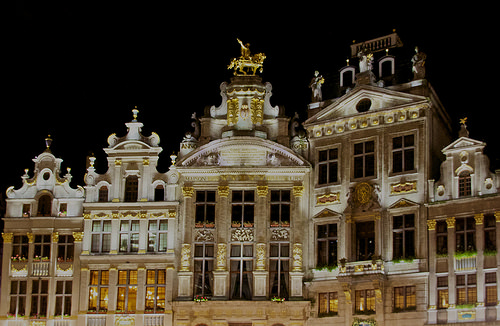 Last blog post we were happily avoiding the world in Clearwater, BC waiting for our flight to Brussels. But then life intervened and an update by my previous blogging program left my site vulnerable so I had to shut down my blog for several weeks. I took the opportunity, however to completely revamp my website, so after reading this post, feel free to look around.
Last blog post we were happily avoiding the world in Clearwater, BC waiting for our flight to Brussels. But then life intervened and an update by my previous blogging program left my site vulnerable so I had to shut down my blog for several weeks. I took the opportunity, however to completely revamp my website, so after reading this post, feel free to look around.
As a quick recap, we’re following the Formula 1 races around the globe. After their summer break, the first race was at Spa Francorchamps, which is my favorite race on the F1 calendar. As it was a few weeks ago, I can’t actually remember the race, except that it wasn’t as incident prone as Spa usually is - must have been one of the few all-dry races Belgium has seen in a long time.
But as were supposed to be on a tour, we’ll leave the race as history. I’ve been to Belgium several times and was quite surprised to find I hadn’t blogged about it previously. It’s easy to get from London to Brussels on the Eurostar and as my husband isn’t a huge fan of Paris, it was a quick weekend away for us. I can honestly say Brussels is amazing and should be on every European tour itinerary.
Brussels has the ‘je ne sais quoi’ of Paris without the attitude. It has history, palaces, an amazing square and giant balls. Yes, giant balls. Okay, it’s called the Atomium and was originally built for the 1958 World’s Fair but has survived by popular demand. However, the absolute best thing to do in Brussels is to grab a coffee and one of the heavenly smelling gaufres (Belgian waffles), sit in the main square and watch the people. Belgians out for the day are one of the most elegant people I’ve come across. You may want to rethink your wardrobe and dress a bit better when in Belgium. Plus on the weekend, at least when we were there, there was an amazing market in the square which was well worth a wander.
The ideal time to visit Brussels is actually on the weekend. During the week the city is full of European politicians and international dignitaries. The hotels are full, the streets are blocked with limos and security details and regular Belgians are busy at work. Come on the weekend, many of the hotels offer amazing packages and the city becomes alive with real people. We stayed at the Stanhope, up near the palace and an easy walk to the main square. It is a fabulous boutique hotel and at the time had a policy of upgrading to the best room available, no matter what you’d paid for. So my husband and I had an amazing suite with a library downstairs and a spiral staircase up to the bedroom. It was fabulous and a weekend we’ll never forget. Belgian food is also great, French with a twist. And don’t get me started on the chocolate.
Another post I’ll talk about Bruges also in Belgium. For now, however we’ll keep on the F1 schedule. The race following Spa was in Monza, Italy. I’ve blogged quite a bit about Italy – Rome, Pisa, Venice, Florence, and a bit about Brisighella so I think we’ll leave that country. Following Italy was Singapore but I’ve also blogged about that city state. That brings us to Japan and the race at Suzuka. I haven’t been to Japan but we’ll make a brief stop there. See you back here on November 1st. Merci beaucoup for visiting Brussels with me today. Have you been? What’s on your recommended ‘must do’ list?
Clearwater, BC, Canada
- Details
- Written by Alexia Alexia
- Hits: 4083 4083
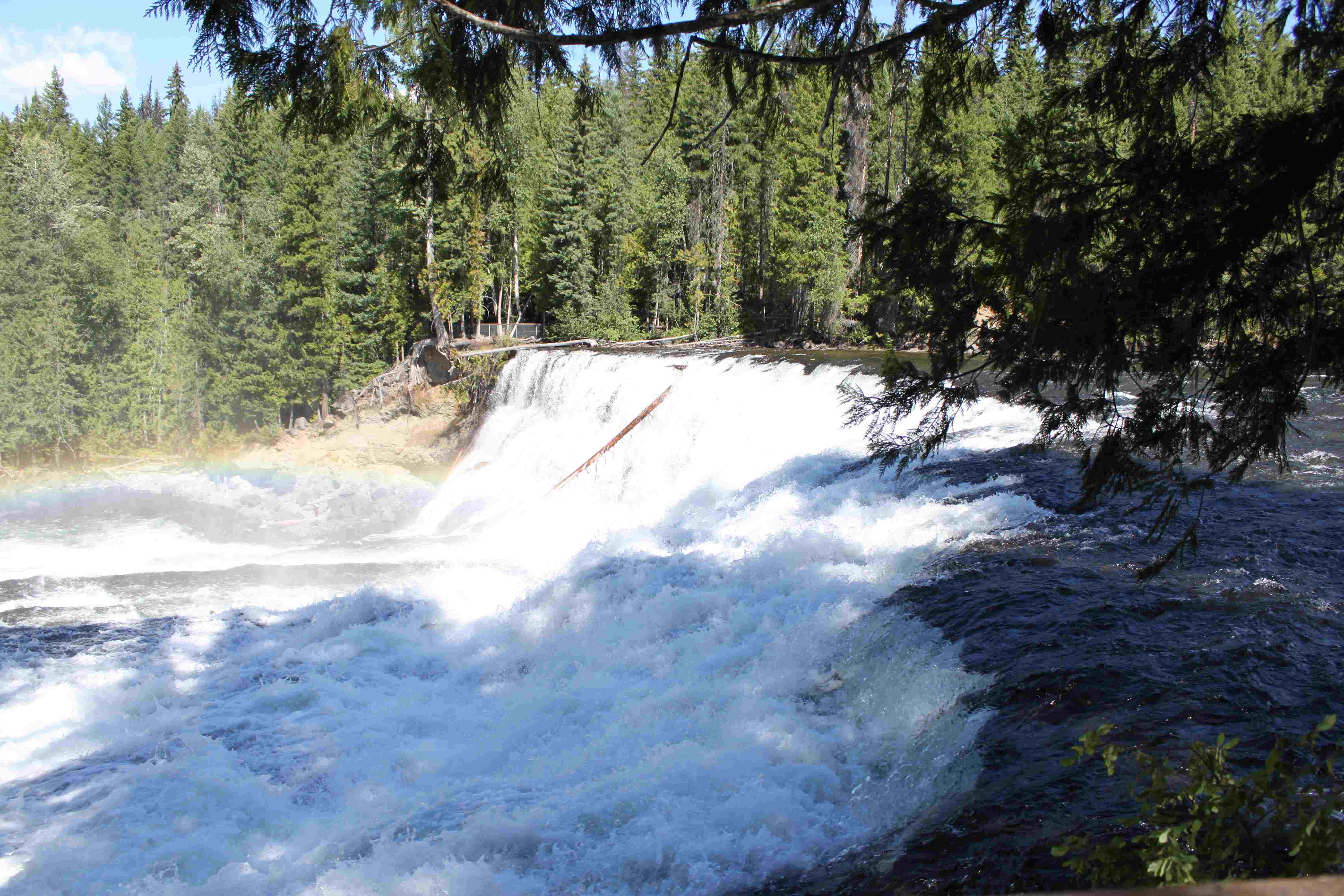 As the Formula 1 season is on summer break I’m going to blog today about my summer holiday. I loaded up the minivan with my four children and husband and we took off on an epic ten day road trip to the Rocky Mountains and then back home. Our first stop was Clearwater, British Columbia. I mostly chose this destination as it was about a 6 to 7 hour drive from our house (taking the long way through the Fraser Canyon route) so it was far enough away from home to seem like we were away. Plus we’d never been there before so it held an element of adventure.
As the Formula 1 season is on summer break I’m going to blog today about my summer holiday. I loaded up the minivan with my four children and husband and we took off on an epic ten day road trip to the Rocky Mountains and then back home. Our first stop was Clearwater, British Columbia. I mostly chose this destination as it was about a 6 to 7 hour drive from our house (taking the long way through the Fraser Canyon route) so it was far enough away from home to seem like we were away. Plus we’d never been there before so it held an element of adventure.
Clearwater is the gateway to Wells Gray Provincial Park, famous for Helmcken Falls. It was impressive but personally I preferred Dawson Falls because you can get closer to them. Of course, if you really want to get close to the water, then you can hike to Moul Falls where you can actually go behind the waterfall. We saved that one for next time as we were pretty hiked out.
We stayed in an amazing cottage on the edge of a meadow at the base of Battle Mountain. The cottage was the home of some original settlers but 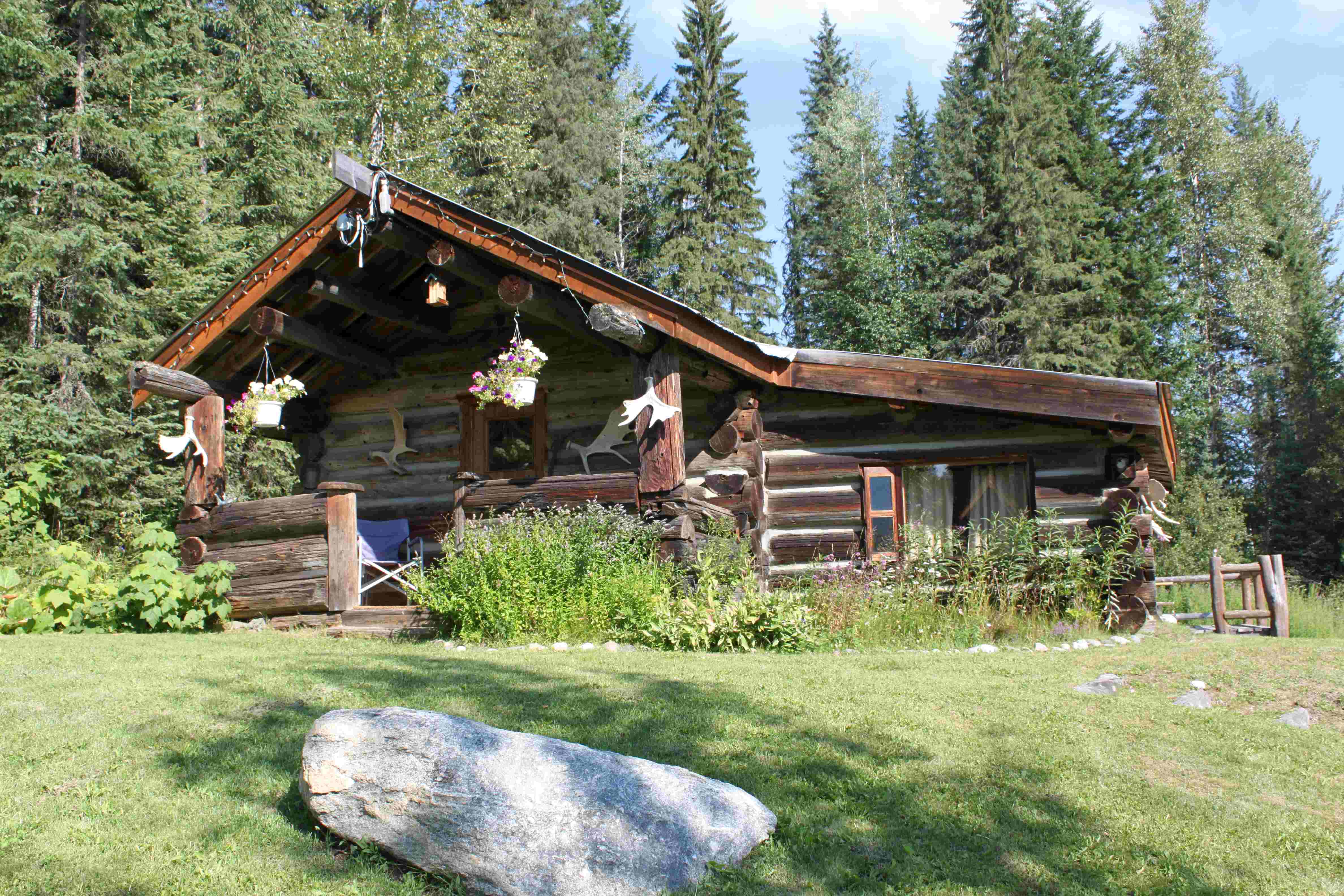 has been modernized to make a comfortable base from which to explore the surrounding countryside. There was no TV, Internet or cell service so it was a real escape from modern life. Unfortunately, due to extreme dry conditions, there was a campfire ban in the area so we couldn’t have a fire and roast marshmallows or make s’mores. Maybe next time. If you’re going to be travelling through the area, then I highly recommend the place, there’s also a B&B up at the main house if you prefer something a little less self-catering, here’s the website (http://www.clearwaterspringsranch.com/). Another note, there are no stores for over 30km so bring what you need, it’s a long drive back to town.
has been modernized to make a comfortable base from which to explore the surrounding countryside. There was no TV, Internet or cell service so it was a real escape from modern life. Unfortunately, due to extreme dry conditions, there was a campfire ban in the area so we couldn’t have a fire and roast marshmallows or make s’mores. Maybe next time. If you’re going to be travelling through the area, then I highly recommend the place, there’s also a B&B up at the main house if you prefer something a little less self-catering, here’s the website (http://www.clearwaterspringsranch.com/). Another note, there are no stores for over 30km so bring what you need, it’s a long drive back to town.
In addition to hiking and seeing waterfalls, there is also white-water rafting and canoeing in the area and I’m sure fishing. Plus loads of wildlife. I saw a couple of deer, which isn’t anything that special to us as we have deer locally. However there was plenty of bear scat in the area and we had to take the barbeque into the cottage each night so they didn’t come up onto the deck. So if you want a taste of Canada with a super comfortable bed to sleep in each night, this is the place for you.
Our next stop was Jasper in Alberta. Jasper was amazing, so I’ll blog about that another time. The next Formula 1 race is in Belgium at the Spa-Francorchamps circuit, one of my favourites, so I’ll talk a bit about Brussels. See you back here on September 1st.
Budapest, Hungary
- Details
- Written by Alexia Alexia
- Hits: 3636 3636
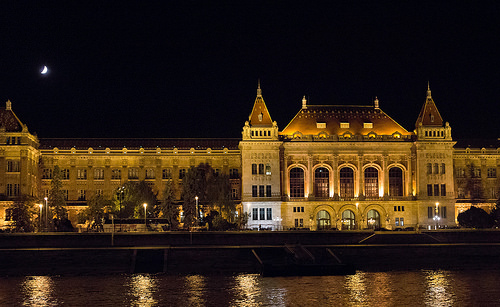 Wow, now that was an interesting Formula 1 race. And a lesson in life never to give up until the checkered flag. Hungary is another country I haven’t visited. My mother went years and years ago, and actually stayed in the same hotel as the then Benetton team. She wasn’t impressed (by the F1 team, not the country – she enjoyed herself there). So, let’s see what’s to do in this landlocked Central European country.
Wow, now that was an interesting Formula 1 race. And a lesson in life never to give up until the checkered flag. Hungary is another country I haven’t visited. My mother went years and years ago, and actually stayed in the same hotel as the then Benetton team. She wasn’t impressed (by the F1 team, not the country – she enjoyed herself there). So, let’s see what’s to do in this landlocked Central European country.
The capital is of course Budapest. All my daughters have European cities as one of their names so when I was expecting my third girl, I suggested Budapest. Husband vetoed me (he has no sense of humour). She got the name Sofia, capital of Bulgaria, sorry Hungary.
Interesting tidbit to start your next cocktail party conversation: prior to 1873, Budapest was two cities, Buda and Pest on opposite sides of the Danube River. They were unified on 17 November 1873 becoming Budapest. It is the largest city and capital of Hungary. Sometimes I wonder why I don’t get invited to more cocktail parties with my vast knowledge of completely useless facts.
Anyway, the number one thing to do in Hungary is to visit the Fisherman’s Bastion in Budapest. And having seen the photos, it would be my first place to visit as well. Built in the 19th century as a lookout tower, it now it’s a great place to take photos of the city below. The second most popular tourist destination is the parliament building. As a fan of Gothic and Renaissance architectural styles it certainly is impressive.
The third top thing to do in Hungary is visit the Faust Wine Cellars. I think I’m in love with Hungary already. Although let’s face it, when naming the great wine producing countries of the world, Hungary is probably not near the top of your list. As mentioned earlier, Budapest sits astride the Danube River, one of the great European waterways. So no trip to Hungry would be complete without a river cruise.
However it’s water of a different kind that interests me in Hungary. It is home to the largest thermal water cave system and second largest thermal lake in the world. Except I’ve just read that bacteria is the dominant life form in the lake so maybe I’ll take a pass. However I’ve swum in other thermal pools and survived, albeit with a nasty UTI (see my blog post on Pamukkale, Turkey).
Another place I’d like to visit if I was ever fortunate enough to go to Hungary would be Lillafured. It’s a popular tourist resort with hanging gardens, caves, man-made waterfalls and botanical gardens. It seems an idyllic place to recover from days spent traipsing around tourist monuments (or an overindulgence at the winery).
Those are my top picks for Hungary. Have you been? Where would you suggest going?
Also, as Formula 1 is on a 3 week summer break my next post will be before another race. So, it’s anyone’s guess where I’ll spotlight. If you’re really good, I may post some photos and commentary from my holiday. See you back here on the 15th.
